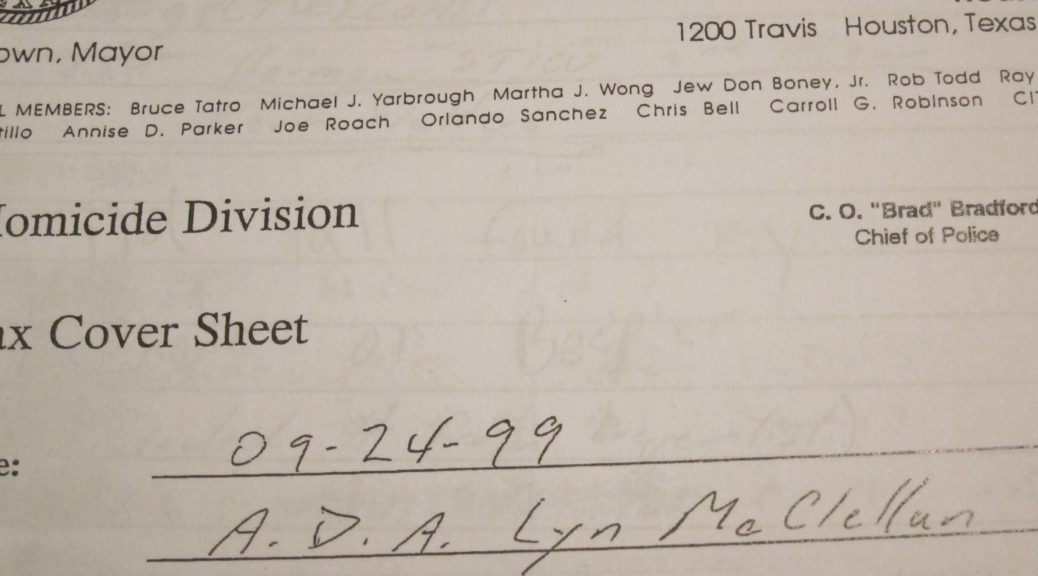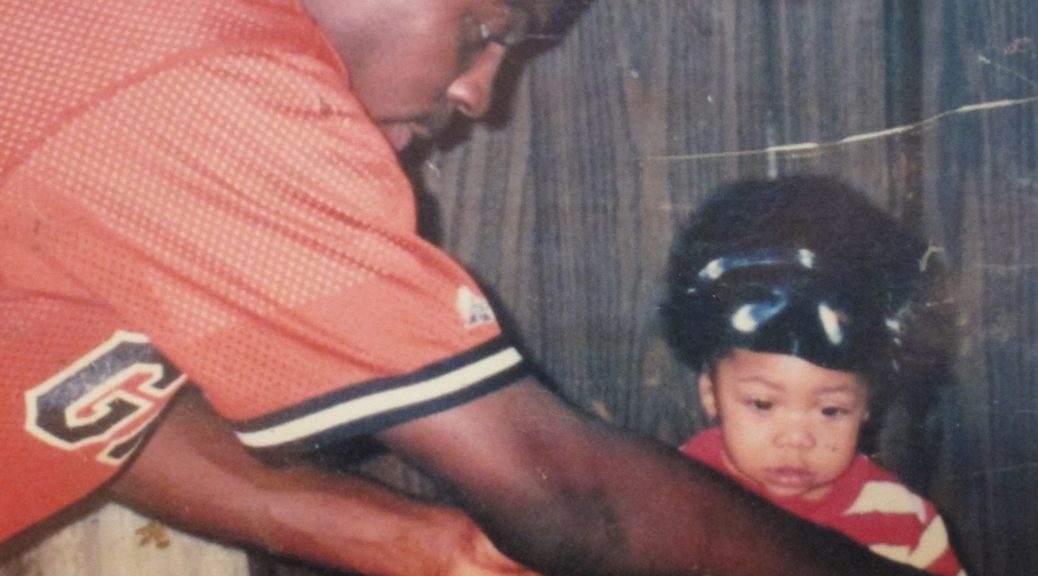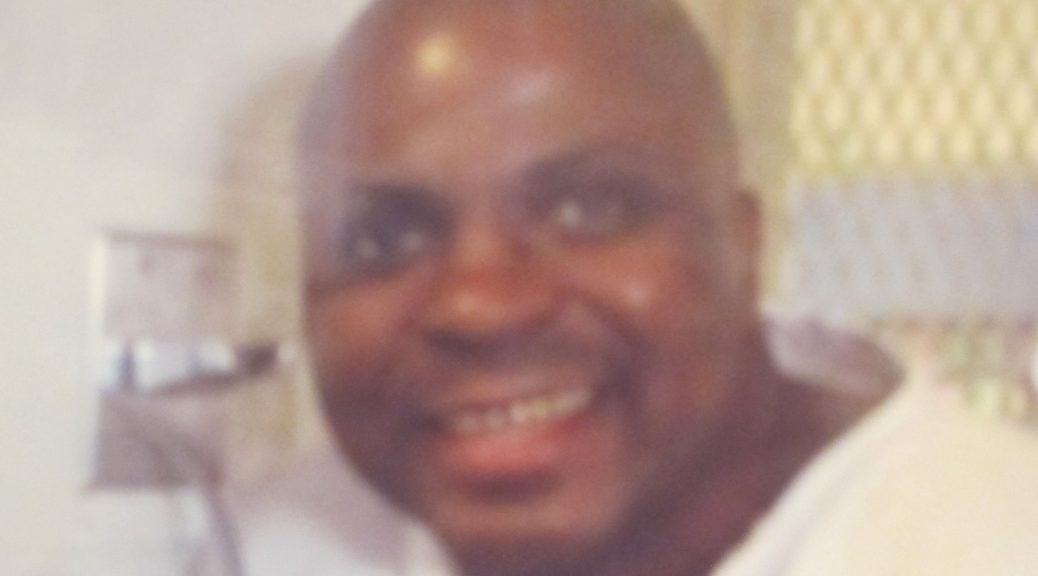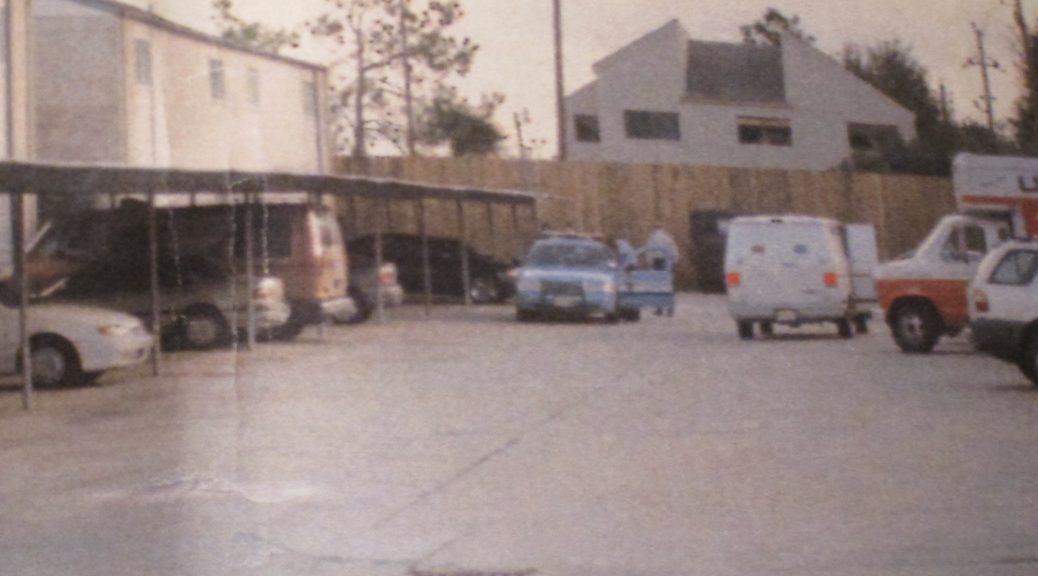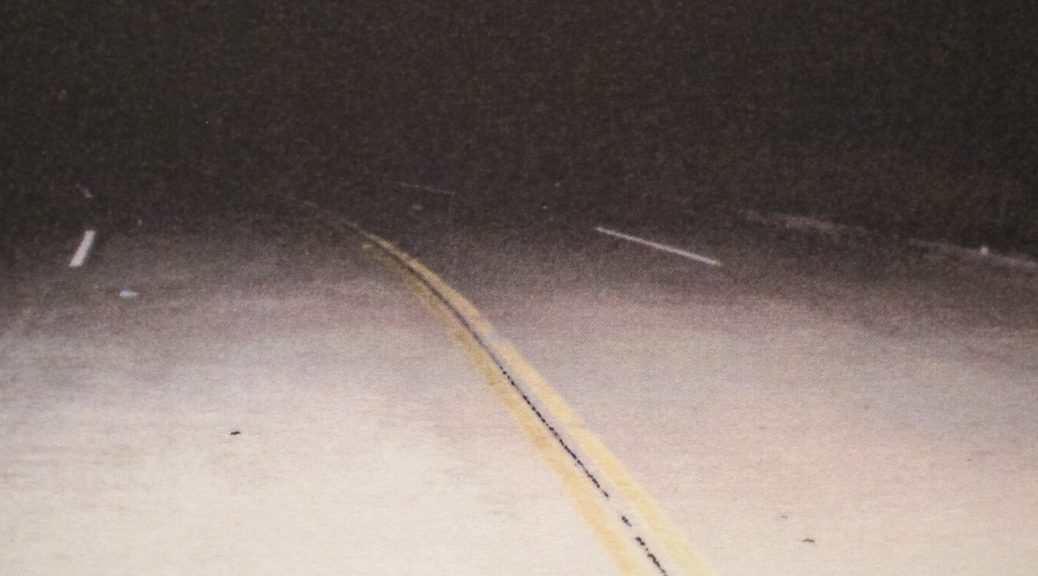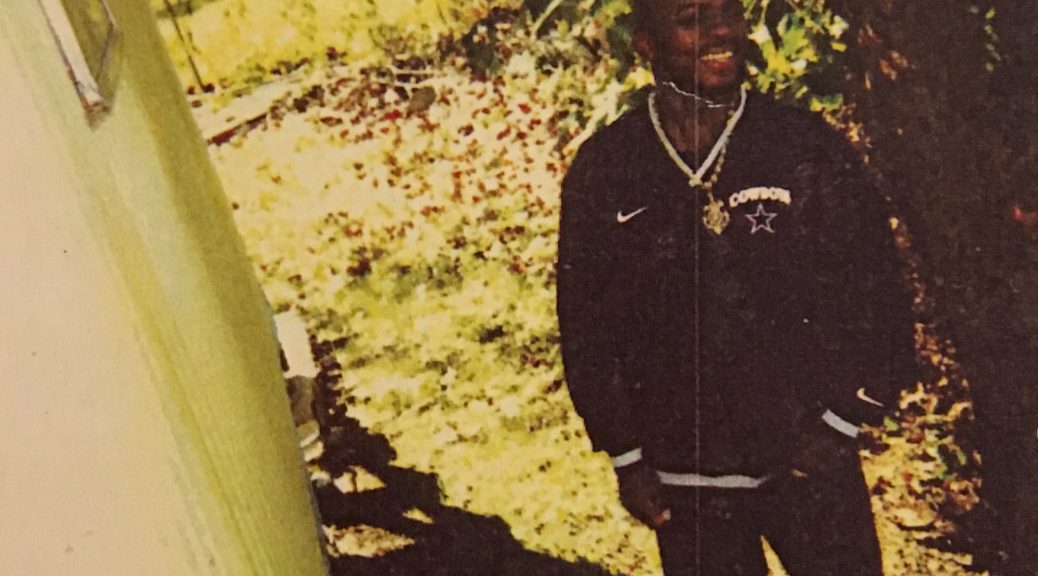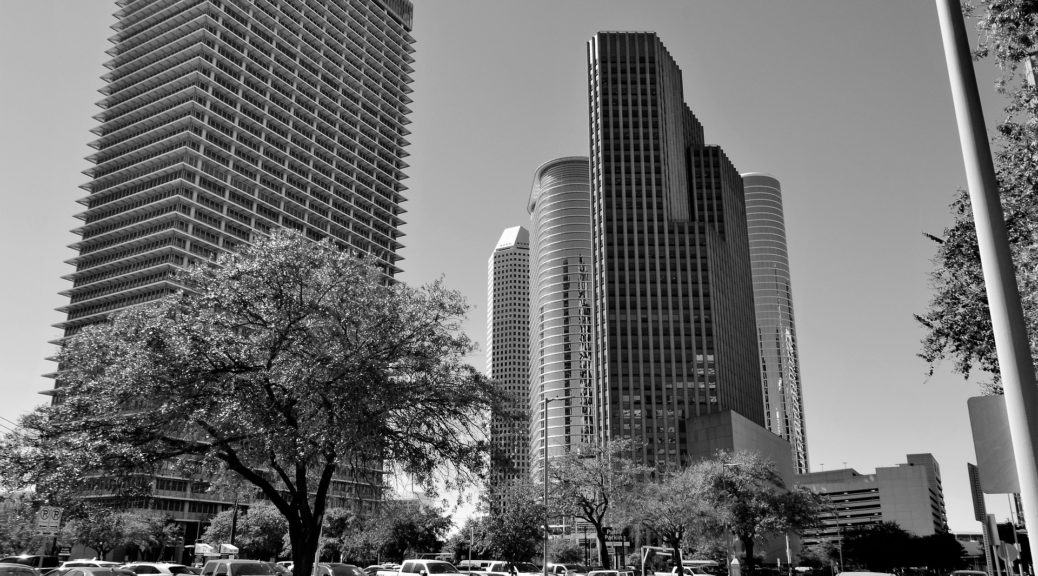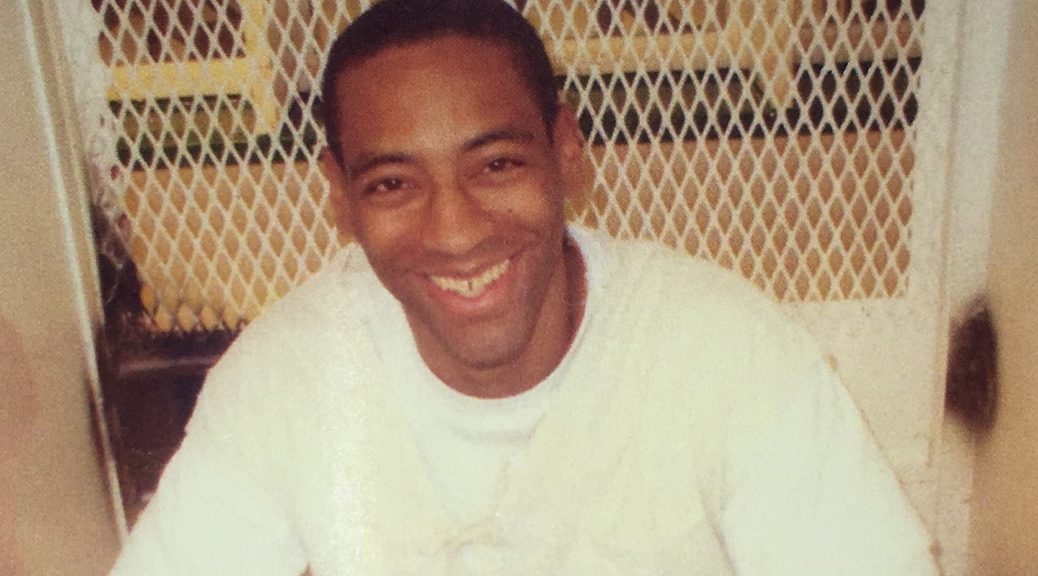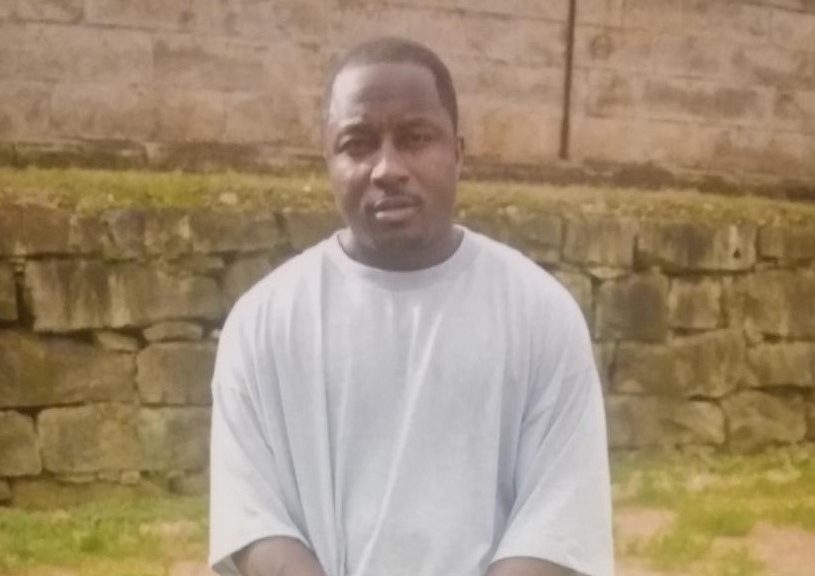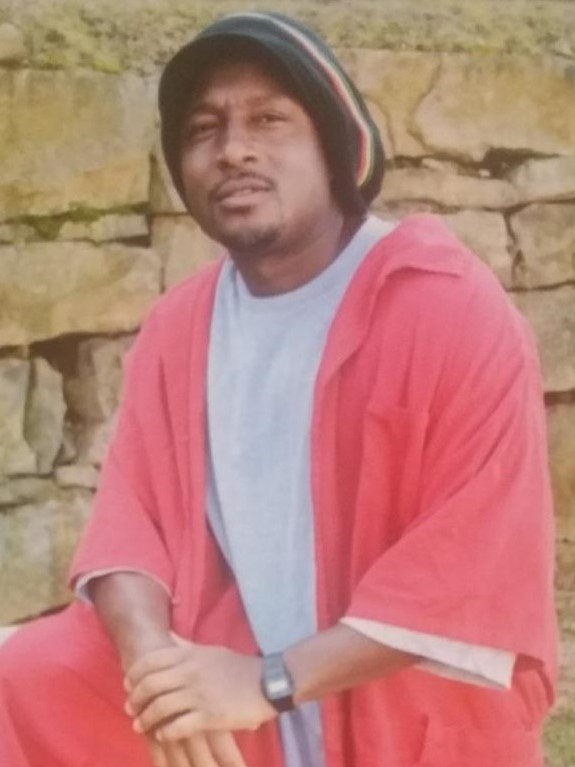Charles Mamou, among 48 Texas inmates sent to the state’s Death Row in 1999, has always maintained his innocence. At first glance, forty-eight sounds like an impossible number, but a closer look brings into question the integrity of the system.
Investigators knew the evening of December 6, 1998, began with a drug deal gone bad, and they got the name of Charles Mamou from two men who later testified they planned to rob Mamou that night. That same week, on Wednesday, December 9, during the second interview of a woman named Robin Scott, police learned Samuel Johnson was Charles Mamou’s ‘driver’ for the drug deal gone wrong. According to Scott, her husband told her, ‘Bug (Samuel Johnson) drove off in his car, leaving Chuck behind.’ (HPD Archived Incident Report 156416498, Supplement No. 11)
Later that same day homicide detectives picked up Samuel Johnson at his apartment and brought him to the homicide office where a written statement was taken. In his statement, Johnson described the evening as more of a social event, riding around and meeting up with people – not a drug transaction in the making. According to Johnson, and in contrast to the testimony of all surviving witnesses, Mamou drove away without him. He then went home, went to bed, and heard about the incident the next day on the news.
“When I saw this on the news, I couldn’t believe that Chucky would do something like this. I was scared and I was shocked and this is the reason that I did not tell anyone.” – (HPD Archived Incident Report 156416498, Supplement No. 12)
Samuel Johnson’s shock at the news of what took place and his apparent mistaking a drug deal for a night of innocent socializing are all that is recorded in the police department’s Incident Report regarding his involvement. Much like the other individuals involved that night, it appears Johnson was not charged with anything in relation to the death of Mary Carmouche or the drug transaction, although his memory of what happened that night is in sharp contrast to what several other people recall.
According to the testimony of Dion Holley and Kevin Walter, Samuel Johnson drove away and left Mamou behind on the alley. According to the statement of Robin Scott, she was told ‘Bug drove off in his car, leaving Chuck behind’. According to Charles Mamou, Samuel Johnson pulled off in his car – and he jumped in the Lexus that held Mary Carmouche and fled the alley, returning to the apartment complex where all the involved individuals were located and where the Lexus was ultimately located by police with a flat tire – one of the few pieces of actual physical evidence.
Samuel Johnson also said in his statement to police that he never again saw Mamou or the Lexus after driving away from the shooting.
Johnson’s statement doesn’t just contradict the recollection of others, he also contradicts himself in his testimony, describing the innocent night of socializing differently in the courtroom.
Q. And what did he tell you he wanted to do?
A. He was going to buy some dope.
Q. And wanted you to take him to the location?
A. Right.
Q. And what were you going to get out of the deal?
A. I was going to get something out of it. I don’t know how much.
(Volume 19 of the Reporter’s Record at page 24)
Q. Tell the members of the jury exactly what it was that y’all were going to do.
A. Go buy some drugs.
(Volume 19 of the Reporter’s Record at page 68)
Q. Did you have some agreement with Mr. Mamou to engage in some type of illegal conduct?
A. Yes.
Q. You knew full well when you left to go and, in fact, throughout the day when you’re with him, that you were going to engage in some type of illegal conduct.
A. Yes.
Q. And you realized that conduct was a felony, correct?
A. Right.
Samuel Johnson also testified regarding what he would do if something actually ‘happened’.
Q. And do you keep your eyes on them the entire time, or are you doing other things?
A. I’m keeping my eye on them at all times.
Q. Making sure that nothing happened?
A. Yeah.
Q. What were you going to do if something happened?
A. Probably would have left.
Q. So, if something had happened right there, your response would have been to leave and leave Charles and Terrence there?
A. Yeah.
(Volume 19 of the Reporter’s Record at page 74)
Something did happen. The deal ended in gunfire with one man dead.
Samuel Johnson also testified regarding his own credibility.
Q. And I just want to make sure we understand something; because when you talked to the police, you told them a bunch of lies, didn’t you?
A. Yeah.
Q. And yet, the lies that you tell them, they’re being told after you’ve been arrested, correct?
A. Right.
(Volume 19 of the Reporter’s Record at page 98)
Q. Yet when you talked to the police, you lied about – or you say now that you lied about the Lexus’ hood being up?
A. Right.
(Volume 19 of the Reporter’s Record at page 100)
Samuel Johnson’s testimony did mirror his original statement in one aspect. He clearly indicated in both that he went ‘directly home’. The shooting on Lantern Point took place at around 12:00 midnight, which would have him back at his apartment on Fondren at around 12:30 a.m. on December 7.
Q. You go directly home?
A. Yeah.
Q. You tell your wife what happened?
A. No, she was asleep at the time.
Q. Pretty exciting events in your life, isn’t it?
A. Very exciting.
Q. You just get in bed and go to sleep?
A. No, I took a shower.
Q. Took a shower, and then got in bed and went to sleep?
A. No, opened me a can of soda and went to bed.
Q. Talk to anybody that night?
A. No.
Q. Talk to Robin or Howard Scott at any point after that?
A. No.
Two witnesses, in two separate interviews, have described Samuel Johnson driving into the apartment complex where the Lexus was found, followed shortly after by the Lexus with Charles Mamou – a little after midnight. Those witnesses appear to support Charles Mamou, who has always maintained he fled the drug deal shooting and followed Samuel Johnson back to the apartments.
It’s unclear what, if anything, the Houston Police Department may have pursued. There are references to interviews, which include references to a written statement made by Howard Scott on December 8 among others, but no actual record of vital interviews. After in-person, as well as telephone inquiries with the records department at HPD, I was told by one employee that not all the material gets put into the file. It’s unclear who decides what gets included.
In 2007 a private investigator, Carl Deal, who reviewed the case files noted, “Further, Samuel Lee Johnson, Jr., who was present during the shooting, who was the driver for Charles Mamou to the drug deal, provides a substantially false statement to police regarding the facts of the shooting.”
He goes on to say, “Samuel Johnson was not prosecuted and later became a witness on behalf of the state. Statements, recordings of statements, kinesic interviewing assessments of suspects and witnesses that depict the fine details of the original transaction and exchange of violence, as well as the disposition of Mary Carmouche in the two days that followed the shooting remain unresolved and unannounced.
“In short, standard police protocol requires that when police receive information, the motive for providing the information must be investigated as well. And then the truthfulness of the statements should be assessed through efforts at corroboration. All statements should be recorded in writing, tape recorded or video-taped – and police investigators should be making professional judgments in this process based upon their experience in the signs and symptoms of deception, speaking as to whether statements are credible.
“A series of witnesses – key among them being Samuel Johnson, provided statements to police and then undoubtedly later to prosecutorial investigators or attorneys which are not present in the investigative file.”
Samuel Johnson’s testimony seems to confirm Mr. Deal’s opinion regarding follow-up interviews.
Q. The only persons you’ve spoken to about this case since December 6th of 1998 have been police officers and prosecutors, correct?
A. Right.
Q. And how many times have you met with police or prosecutors since December 6, 1998?
A. Numerous times.
(Volume 19 of the Reporter’s Record at page 50)
Moreover, the proceedings for Charles Mamou’s whirlwind capital murder trial began on September 7, 1999. Actual testimony began on October 4, 1999. Unbeknownst to Charles Mamou – or the jury – Officer Bob King at HPD faxed information to Lyn McClellan at the prosecutor’s office on September 24, 1999, after the trial was underway. Included in that fax were the detective’s handwritten notes documenting Samuel Johnson placing a call to Howard Scott’s apartment at 2:37 a.m. on the evening the events took place. The jury and Mamou only heard Johnson clearly testify that he went straight home and to sleep – talking to no one. The prosecutor heard the same thing, but failed to share with the jury or Charles Mamou the fax he received indicating Samuel Johnson wasn’t actually asleep – but dialing his cell phone and trying to contact Howard Scott at 2:37 in the morning. The phone call he made was from his cell phone – not his apartment’s landline. He could have been anywhere. Unfortunately, the jury was never able to hear Johnson be questioned regarding that phone call because Mamou never knew it happened. Legal? Maybe – I’m not an attorney. Moral and ethical – I’d have to say, no.
The prosecution wrapped up its case with a powerful attack on Mamou’s character, including accusing him of an unsolved murder months previous that he was never charged with, nor given an opportunity to defend himself in. That case is unresolved to this day but it was used as a tool to sentence Mamou to death.
In addition to Samuel Johnson’s phone call that night, the prosecution also knew ‘hairs’ and ‘trace evidence’ were collected at the time of the victim’s autopsy. Charles Mamou only learned of the phone call and untested evidence in 2019.
According to his testimony, Samuel Johnson worked for Orkin, treating homes throughout Houston. He described the area he worked in as the west side, out towards Katy and the southwest part of town.
I tried to contact Samuel Johnson in preparing this post. He did not respond to my request.
Anyone with information regarding this case can contact me at kimberleycarter@verizon.net. Anything you share with me will be confidential.
All related posts are available at Charles Mamou.
TO CONTACT CHARLES MAMOU:
Charles Mamou #999333
Polunsky Unit 12-CD-53
3872 South FM 350
Livingston, TX 77351
![]()
